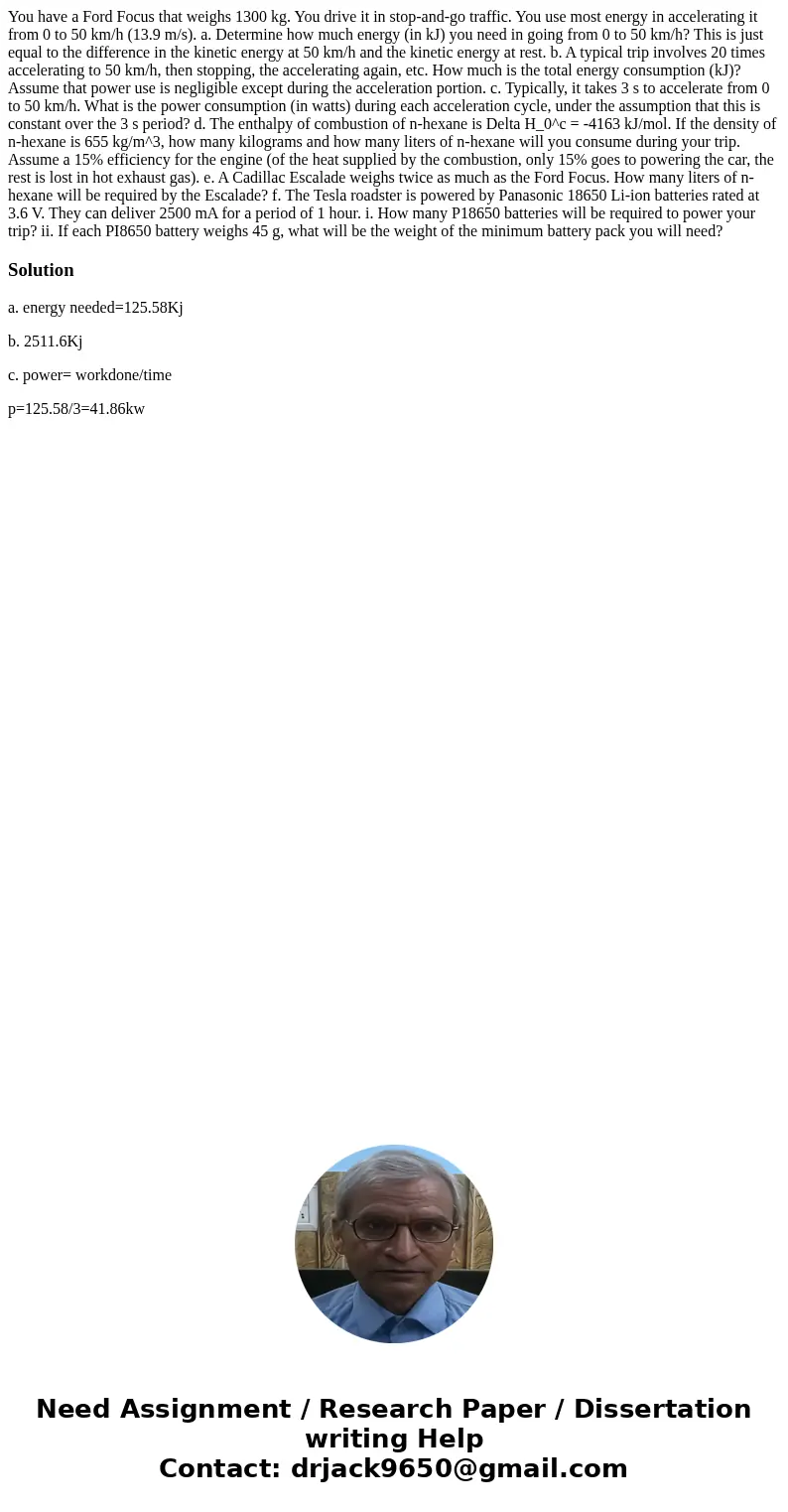You have a Ford Focus that weighs 1300 kg You drive it in st
You have a Ford Focus that weighs 1300 kg. You drive it in stop-and-go traffic. You use most energy in accelerating it from 0 to 50 km/h (13.9 m/s). a. Determine how much energy (in kJ) you need in going from 0 to 50 km/h? This is just equal to the difference in the kinetic energy at 50 km/h and the kinetic energy at rest. b. A typical trip involves 20 times accelerating to 50 km/h, then stopping, the accelerating again, etc. How much is the total energy consumption (kJ)? Assume that power use is negligible except during the acceleration portion. c. Typically, it takes 3 s to accelerate from 0 to 50 km/h. What is the power consumption (in watts) during each acceleration cycle, under the assumption that this is constant over the 3 s period? d. The enthalpy of combustion of n-hexane is Delta H_0^c = -4163 kJ/mol. If the density of n-hexane is 655 kg/m^3, how many kilograms and how many liters of n-hexane will you consume during your trip. Assume a 15% efficiency for the engine (of the heat supplied by the combustion, only 15% goes to powering the car, the rest is lost in hot exhaust gas). e. A Cadillac Escalade weighs twice as much as the Ford Focus. How many liters of n-hexane will be required by the Escalade? f. The Tesla roadster is powered by Panasonic 18650 Li-ion batteries rated at 3.6 V. They can deliver 2500 mA for a period of 1 hour. i. How many P18650 batteries will be required to power your trip? ii. If each PI8650 battery weighs 45 g, what will be the weight of the minimum battery pack you will need?
Solution
a. energy needed=125.58Kj
b. 2511.6Kj
c. power= workdone/time
p=125.58/3=41.86kw

 Homework Sourse
Homework Sourse